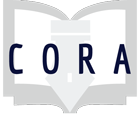This activity helps students collectively practice summarizing, paraphrasing and quoting. To begin, students have a conversation as a class on any topic of their choosing. The instructor transcribes the conversation and then as a group, the class examines the conversation and write summaries, paraphrases and quotes.
Assignments
BEAM Me Up is a one-shot session that works well in addition to a search strategies class, but can be done without. This session asks students to use the BEAM framework coined by Joseph Bizup to organize and synthesize research materials to create a complex and well-supported argument. Rather than evaluated sources using a checklist, the instructor using BEAM asks students to consider how the information will be used (and to consider how authors use information to build arguments). Adaptors may want to replace the sources given here with ones relevant to the students' curriculum.
Each year, I host an Art+Feminism Wikipedia edit-a-thon and I often get students who are new to Wikipedia editing, as well as students who show up for class credit. To help engage students in different activities on Wikipedia, I created the following BINGO cards. These can be used by instructors or event organizers in any way that fits your approach to edit-a-thons. I always provide instruction and an Art+Feminism research and event guide to help everyone get started editing. These BINGO cards are especially useful for new editors and content creators.
A two-credit online undergraduate information literacy course used in an adult degree completion bachelor's program.
This is a participatory, variable lesson frame ready for you to modify to suit your instruction needs. This lesson and it's variations focuses on encouraging students to see themselves as information creators and part of the scholarly conversation and can also variously include conversations about about the scholarly information cycle and/or authority depending on instruction constraints and configuration.
This activity provides an interactive, student-centered, fun opportunity to explore skills of critical thinking and evaluation of resources. By allowing students to connect those things that they already know (even if they don’t know they know it) to larger concepts, we encourage them to trust themselves and to begin to develop their intuition as scholars, moving away from checklists and formulas for resource evaluation and toward a thoughtful critique of sources based on individual need and use.
Comment envoyer une minorité d'étudiants surmotivés sur des objectifs pédagogiques intégrés et connexes dont le parcours est structuré ?
1) Faire une courte introduction engageante (15min.)
2) Identifier la minorité surmotivée et leur distribuer un parcours.
3) Assurer une supervision mininal avec un suivi distant et ponctuel au besoin.
Avec 2 exemples de parcours: une auto-initiation en 5 niveaux pour contribuer à Wikipédia; et un programme de 12 semaines pour démarrer un blogue sur un sujet de recherche.
Art and design students are almost always asked to write about their work, in the form of an artists’ statement, at some point in their academic career. This is a skill that is crucial as they move from student to professional or practicing artist because it gives them the opportunity to reflect on their work, share concepts and develop their authority in their field, and, very importantly, discuss how their work builds on the work of others who share similar themes and/or processes.
Students will learn how serial publications are presented in databases and how to read them chronologically to determine trends over time using the MLA International Bibliography.
A hybrid teaching module with two elements: an interactive online module for students to complete ahead of class and a face-to-face lesson plan that builds on the skills learned in the online lesson. The in-class session provides students with a critical exploration of the purchasing power of minimum wages across states and/or the earnings gap between men and women employed full time.
